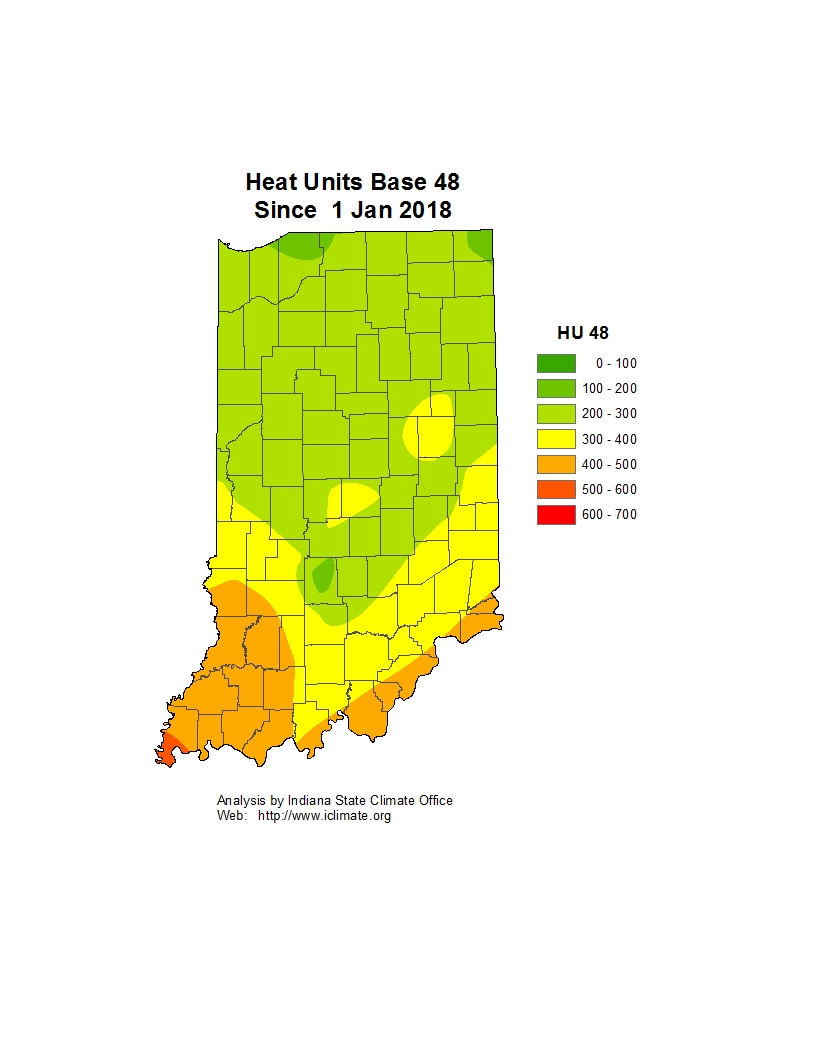Authors: Christian Krupke and John Obermeyer
Pest managers should now be scouting their alfalfa for leaf feeding from weevil larvae. This pest is often overlooked during the early spring planting season.
Producers can manage this pest most effectively by utilizing heat unit accumulations data (base 48°F) to determine when sampling should begin and when an action should be taken, The management guidelines listed below should be used to determine when alfalfa weevil should be controlled in southern Indiana. Refer to the following map for alfalfa weevil development in your area.
Alfalfa Weevil Management Guidelines Southern Indiana
| Heat Units | % Tip Feeding | Advisory |
|---|---|---|
| 200 | Begin sampling. South facing sandy soils should be monitored earlier. | |
| 300 | 25 | Re-evaluate in 7-10 days using the appropriate HU or treat immediately with a residual insecticide if 3 or more larvae are noted per stem and % tip feeding is above 50% |
| 400 | 50 | Treat immediately with a residual insecticide. |
| 500 | 75 | Treat immediately. |
| 600 | 75+ | If cutting delayed more than 5 days, treat immediately. |
| 750 | If harvested or harvesting shortly, return to the field in 4-5 days after cutting and spray if 1) there is no regrowth and weevil larvae are present OR 2) feeding damage is apparent on 50% of the stubble and weevil larvae are present. |



